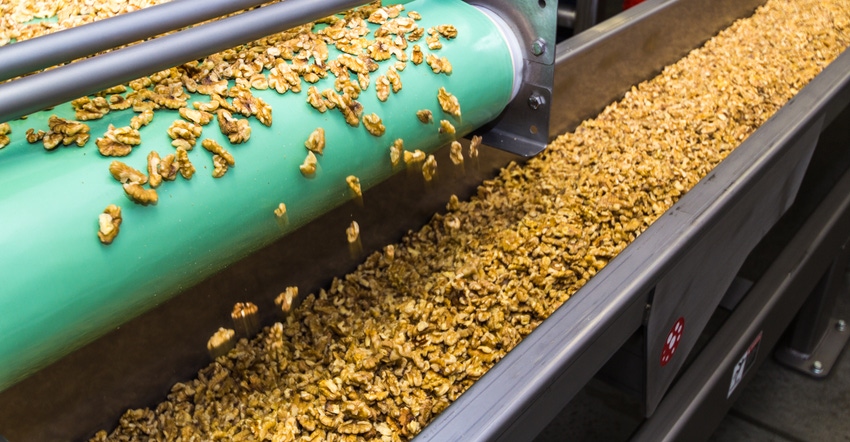
As new Chinese tariffs on U.S. agricultural products go into effect, economic analysis suggests impacts to California producers may be moderate at the most.
The largest unknown at this point will be what China does to moderate U.S. exports through Hong Kong, which currently are not assessed the same tariffs, says Roland Fumasi, vice president and senior analyst with Rabobank. It’s only those products direct-shipped to China that are subject to the tariffs, he says.
“I know that most industry organizations are going to see these tariffs as a big deal, but this is not a big percentage of our production, and we’re largely diversified in our exports. The big question remains: What China does with shipments through Hong Kong.”
Rabobank recently published a report on the potential implications the Chinese tariffs could have on U.S. agribusiness. Fumasi is one of several contributors to the report.
Overall, the volume of California products direct-shipped to China is low, the report notes. About 4 percent of U.S. exports in the fruit and nut category and 2 percent of vegetable exports go to China. That is still not insignificant, he says, as some commodities do have higher levels of exports.
CRITICAL GROWTH MARKET
For instance, California directly ships 5 percent of its walnut production to China. That compares to 3 percent of U.S. pistachio production and about 1.5 percent of U.S. almonds. More almonds are shipped through Hong Kong than to the mainland.
“While fruit and tree nut exports to China generally represent a small percentage of total U.S. exports in this category, China is viewed as a critical growth market for future demand expansion,” the report says. Since 2000, U.S. fruit and nut exports to China increased by a compounded annual growth rate (CAGR) of 18 percent, while exports to the rest of the world grew at a CAGR of 7 percent.
While relatively low, China does play a significant role in trade, accounting for a higher percentage of specific products shipped from the U.S.
The new tariffs on fruits and nuts are in addition to existing tariffs. For shelled almonds the tariffs rose from 10 percent to 25 percent. The previous tariff on inshell almonds was 24 percent. The new 15 percent charge makes that close to 40 percent.
U.S. walnuts are now subject to a 40 percent tariff after the 15 percent hike recently announced. Fumasi says China is the world’s largest producer of walnuts, and may be wanting to curb competition against domestic production.
American macadamia nuts, apricots, and cherries could suffer greater overall impact, since 10 percent of U.S. production of these crops is shipped to China.
WINE: A MODERATE SETBACK
The new 15 percent tariff on U.S. wine imports to China will represent “a moderate setback,” the Rabobank report says. It will make the new tariff rates 29 percent to45 percent, depending on the variety, Fumasi notes.
This could be troublesome for U.S. wine makers; China and Hong Kong are the third-largest importers of U.S. wines behind Canada and the European Union. China imports about 2 million cases of U.S. wine annually — much of it at higher price points. Demand for luxury wine is relatively high in Hong Kong.
While wine shipments to China represent less than 1 percent of total California production, the U.S. could lose market share to France, Italy, and Spain because of the tariffs.
PORK HIT HARDEST
Pork is currently the most impacted of agricultural goods from the United States going to China. Tariffs there of 25 percent could result in a 60 percent decline in exports this year; cut-out values in the short-term may drop 10 percent to 15 percent.
U.S. pork expansion will likely suffer, the report notes. Total demand, absent the Chinese tariffs, was expected to grow 3.2 percent through the end of this year. Earlier estimates put domestic consumption of pork at 9.8 million tons and export demand at 2.6 million tons. Of those exports, 11 percent was expected to be shipped to China.
Rabobank estimates that the tariff could pull 120,000 tons of carcass weight from the market, dragging down hog prices. In the short-term, the U.S. pork industry will need to seek alternative markets to accommodate 180,000 tons of excess supply.
While domestic pork consumption may rise slightly, the impacts to other protein sources like chicken and beef cannot be ignored, the report says. It could take about a year for the U.S. pork industry to reduce production and give some support to what may be a lengthy period of lower producer prices.
Ripple effects from pork may spread to grain and oilseed prices as demand for feed growth declines. “Corn and soybean production may face a reduction of around 100,000 to 150,000 acres, due directly to the decrease in pork feed demand,” the report says.
For the time being U.S. soybean shipments to China may be safe from the new tariffs, since China’s dependency on the crop remains high. Global supplies of soybeans are insufficient to make up any losses in U.S. exports that could occur under potential tariffs on the crop.
About the Author(s)
You May Also Like






